넷째 날
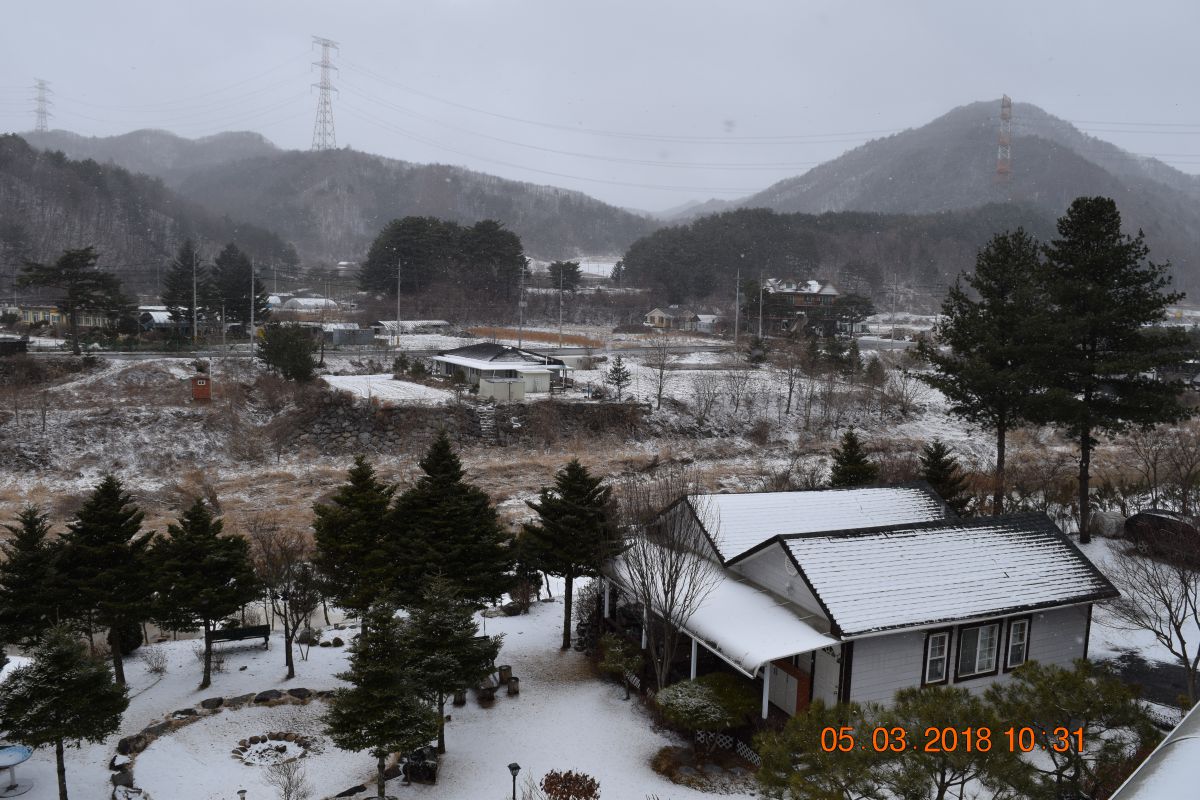
It's lunch time and we need to find something to eat. The owner of Starvill pension points us to the closest restaurants just across the river. It looks near but the chilling wind makes it feel like a long walk. The place specialty is duck
While returning from lunch, the owner awaits us outside and asks us to check out his secret elixir: sap from the maple tree known as gorosoe.
Time to go home. The train leaves about 7PM. Say goodbye to the excellent hosts, who dropped us off at the train station. Back in Seoul Station we exchange for the AREX to Incheon International Airport
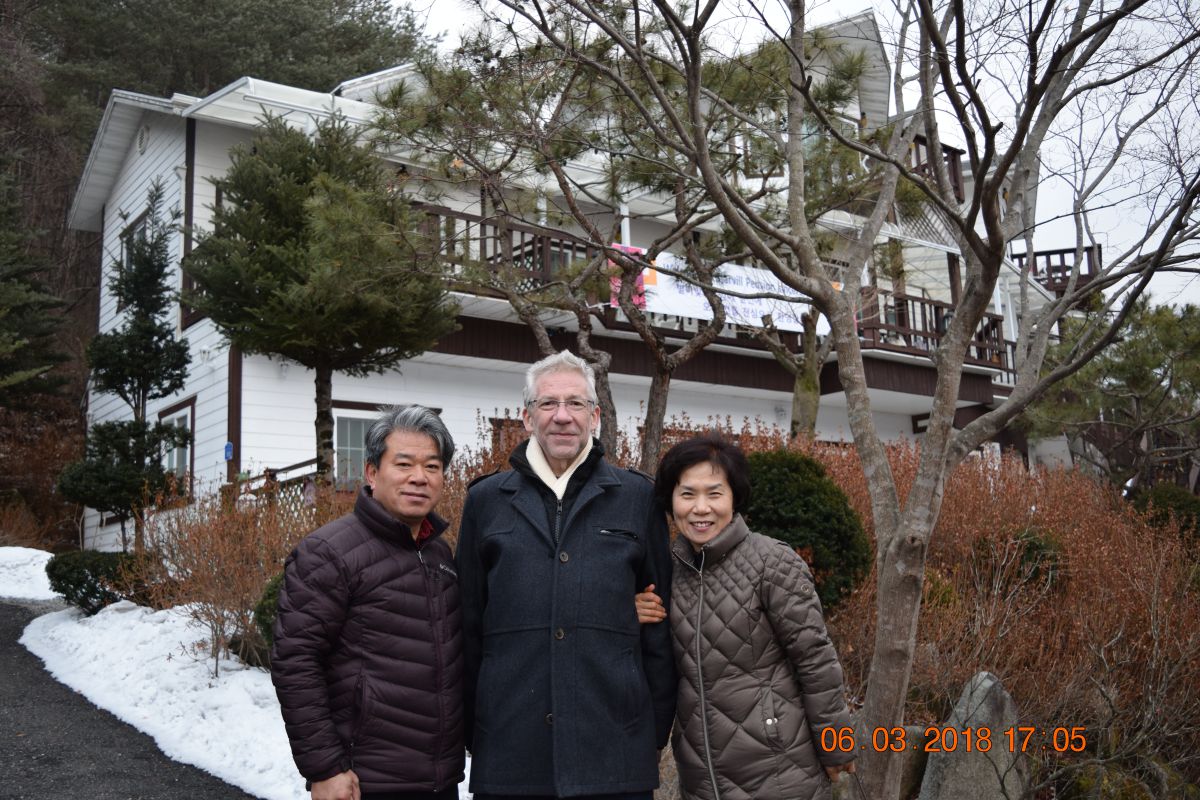 Say goodbye to our Excellent hosts
Say goodbye to our Excellent hosts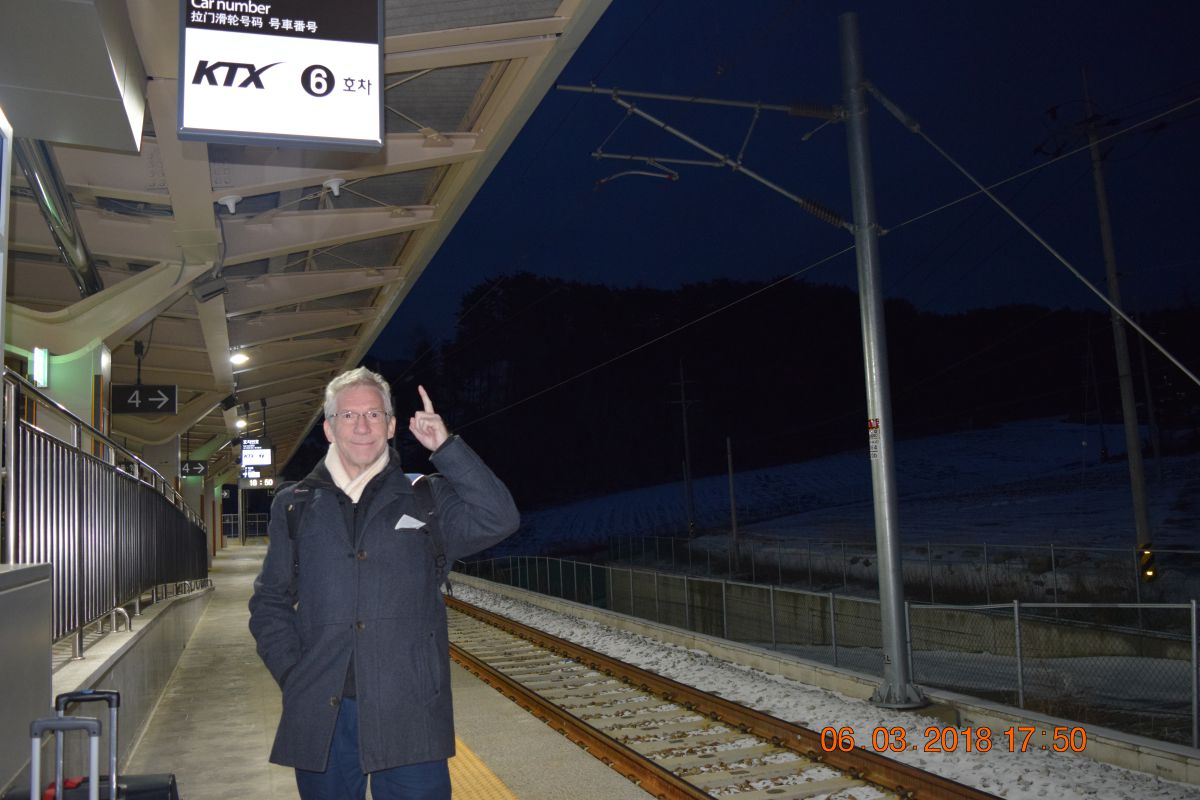 On the right KTX track back to Seoul
On the right KTX track back to Seoul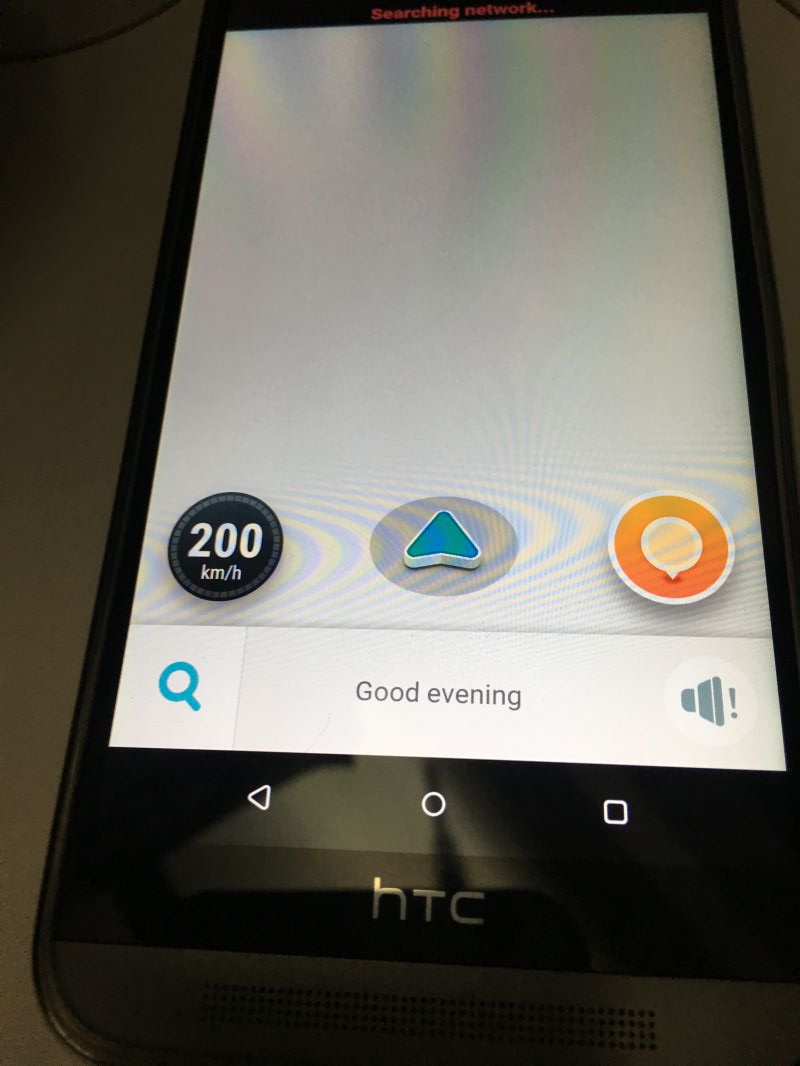 Speed of train measured on phone
Speed of train measured on phone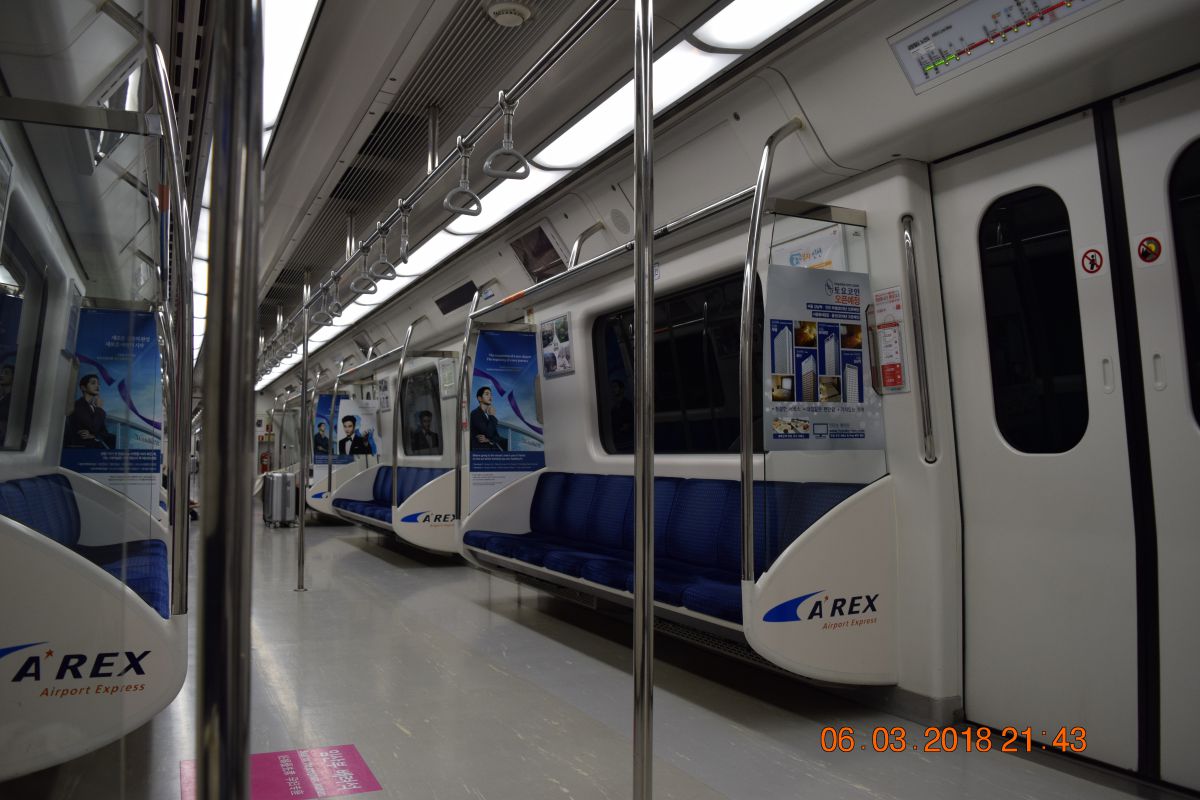 AREX train from Seoul station to Incheon Airport
AREX train from Seoul station to Incheon Airport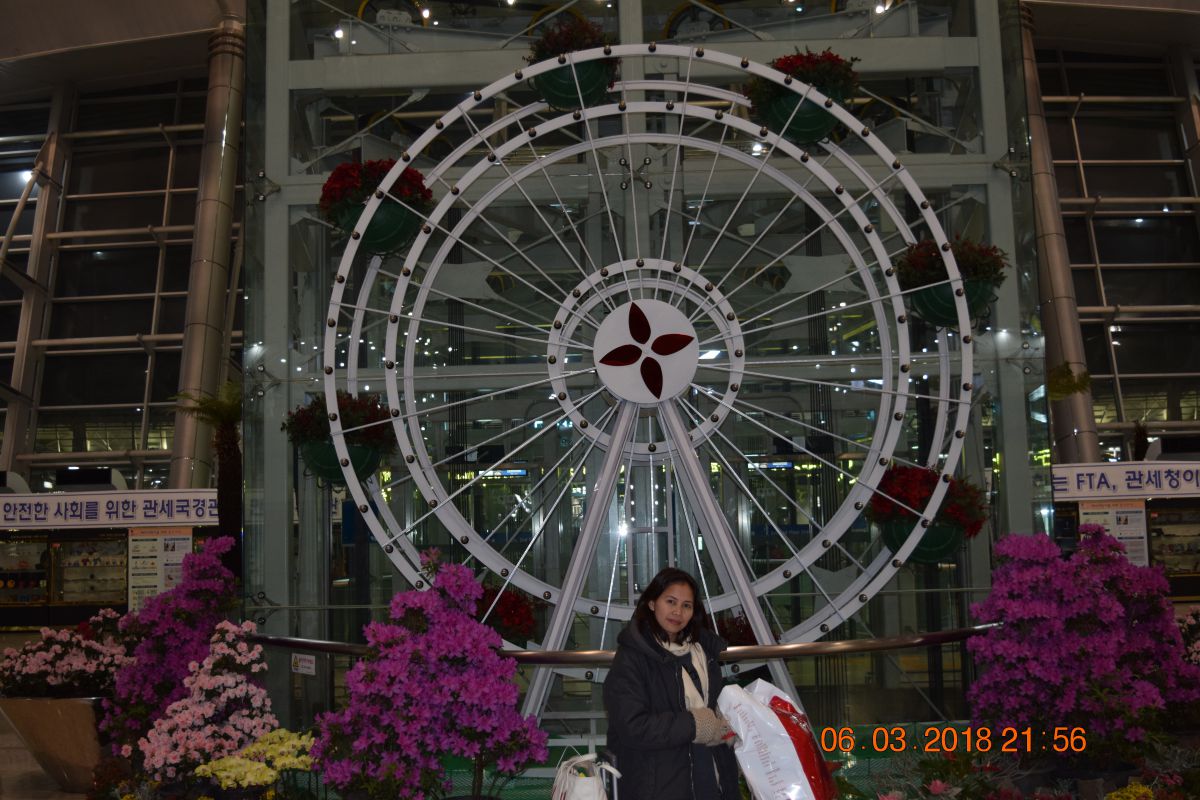 Inside Incheon newly openend Terminal 2
Inside Incheon newly openend Terminal 2History Korean railway
Korean Empire and Partition
In 1896, a concession was granted to American businessmen, Henry Collbran and Harry R. Bostwick, to construct the Seoul & Chemulpo Railroad (SCRR). Its opening was on March 22, 1897. On September 18, 1899, the SCRR was officially opened for traffic from Jemulpo to the south bank of the Han River near Yeongdeungpo. Railroad operations in Seoul did not begin until July 8, 1900, when the Han River was finally bridged. On May 8, 1902, the French-operated railroad financed by the Korean Empire, Northwestern Railway (NWR) was established and completed in 1905. It would connect Seoul with Manchuria by way of Kaesong, Pyongyang and Sinuiju on the Yalu River. During the Korea under Japanese rule, the railways were operated by the Chosen Government Railway and various privately owned companies.
Other major lines were later lain during the colonial period; these included lines originating in Mokpo, Masan, and Busan. These lines connected to Seoul and to Sinuiju in North Korea, where they were linked with the Trans-Siberian Railway. The railroad network was badly damaged during the Korean War, but it was later rebuilt and improved by USATC.
South Korea
Established in September 1963, Korail, an agency of the Ministry of Transportation, was in charge of all rails throughout the 1970s and 1980s and continued electrifying heavily used tracks and laying additional tracks. As of 1987, the combined length of the country's railroad network was approximately 6,340 kilometers, including approximately 761.8 kilometers of double track railroad and 1,023 kilometers of electrified railroad. Suburban lines were electrified and connected to the Seoul subway system. Rolling stock included 459 diesel locomotives, 90 electric locomotives, 133 motor coaches, and 370 electric motor cars.
Railroads in the 1980s were useful primarily in the transportation of freight, and they were important for passenger traffic around Seoul and in the heavily traveled corridor linking the capital with the southern port of Busan. Although the railroad system grew little during the 1980s (there were already 5,600 kilometers of tracks in 1980), rail improvements—the increased electrification of tracks, replacement of older tracks, and the addition of rolling stock—allowed rail traffic to boom. Some of the busiest lines south of Seoul linking the capital with Busan and Mokpo had three or four tracks. The 1980s also saw the introduction of high-speed trains connecting Seoul with Busan, Jeonju, Mokpo, and Gyeongju. The famous "Blue Train" (Saemaul-ho) between Seoul and Busan (via Daejeon and Daegu) took only four hours and fifty minutes and offered two classes of service: first class and special. In 1987 approximately 525 million passengers and 59.28 million metric tons were transported by the railroad system.
Rapid transit
In 1974, Seoul Subway Line 1, the first rapid transit system in South Korea, was opened. Lines 2-9 would be opened later. Lines 1, 3, and 4 are operated by Korail and Seoul Metro, while lines 5-8 are operated by SMRT. Line 2 and Line 9 are operated by Seoul Metro. Korail operates the Bundang, Jungang, and Gyeongui lines.
KTX
During the 1970s a new transportation system between Seoul-Busan corridor was planned. One idea was high-speed railroad, but it was scrapped in favor of construction of Gyeongbu Expressway. After that, economic development and centralization toward Seoul resulted in overload in that corridor, making distribution costs expensive. To solve this problem, plans were studied: resulting in the introduction of a high-speed railroad.
Choosing the technology (vehicles, track, catenary, signalling) was difficult. South Korea wrote out an international tender; Japanese Shinkansen, German ICE, French TGV were candidates with TGV ultimately selected.
The construction of the Gyeongbu High Speed Railway (Gyeongbu HSR) was started on June 30, 1992, before choosing the vehicle. The initial goal was 1998; lack of experience, frequent redesign, difficulties in purchasing land, and the IMF crisis delayed the entire project. As a result, Korea Train Express (KTX) service began April 1, 2004.
Since its opening in 2004, the high-speed rail service has halved the demand for air transport on this corridor which used to be one of the busiest direct air routes in the world.





















Comments powered by CComment